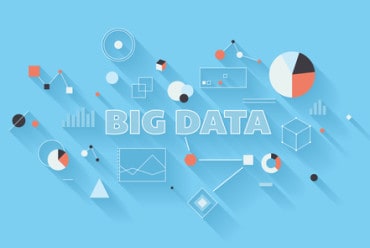Mike Beddow, IBM Cloud and Analytics Sales Leader, discusses continuous intelligence technology adoption trends in the public sector. His case study on the use of AI and streaming data to improve resource allocation in emergencies has broad applicability beyond government agencies.
Adrian Bowles: We’re here with Mike Beddow from IBM. Mike’s the executive in DC who works with cloud and analytics in the healthcare and public sector space. What we’d like to do in this video is talk a little bit about public sector and what your clients are seeing. What you’re seeing.
Mike Beddow: Sure
AB: What’s going on?
MB: Well, I think if we take a look at the public sector in general, really the goal is to provide a safer environment for the constituents. It’s to provide better service for the constituents. So when we talk about cloud and AI and specifically like continuous intelligence, those are the conversations I’m having is, okay, how can we leverage data, artificial intelligence, machine learning, Watson, things of that nature to provide a better environment for our people?
AB: Maybe you can just give me one example or use case with one of the governments that you work with. What problem were they trying to solve and how did you handle it?
MB: We’re working with the state right now. The whole story actually is there was a natural disaster occurred. There was some flooding and obviously some people needed to be saved. So the governor at the time, he went to his assistant and said, “Hey, when can we get a life safety boat out there?” And the assistant said, “It’ll be there in 30 minutes.” And the governor said, “Okay.”
So he goes in front of the cameras and does a press conference. Thirty minutes goes by and there’s no boat. And he says to the assistant, “What’s going on?” She goes, “Okay, let me make a couple of calls.” She makes a phone call, come to find that the boat actually got checked into a separate depot which was an hour and a half away.
So she goes back to the governor and says, “Ah, sorry sir, but it’s actually going to be an hour and a half.” And he says, “How can we not keep track of our assets?” with a couple extra expletives mixed into that statement or into that question.
AB: I’m sure.
MB: So that kicked off this whole idea around this emergency asset deployment optimization project. So how can we take our assets, better predict events, and then predict the deployment and management of those events and how we’re handling them?
So in this case, the case we’re working on right now is around snow. So if it’s going to snow in a certain city or county, do we have enough snowplows to handle that event? If not, let’s reach out to this county and say, okay, you have some extra snowplows. Give us some. You’re not going to experience the same amount of snow. Give us some of those plows so we can help clean it up for the people that live in our city.
So that’s one use case and being predictive about it. There’s a myriad of data sources that we’re using. We have historical data based on what the assets are. We have weather data. We acquired The Weather Company, so we’re using that data. We have data about the assets themselves. Where are they right? Using tracking, using IoT. Are they serviceable or do they need maintenance? Do they have valid registration? Things of that nature. And bringing all those various sources together to then predict, okay, this is what we need to handle that event. And then putting it in a consumable fashion.
AB: With this state that you’re working with, and I understand that it’s still in the early stages, but what kind of technology solutions do you need to enable you to make those recommendations?
MB: So we’re using IBM Cloud Pak for Data as the foundation. So it gives us the ability to collect all those various data sources that we just mentioned, organize all that data, put terms, and create a business glossary, policies, rules, things of that nature onto that data. Perform the analysis of that data, so creating that predictive algorithm that says it’s going to snow, but this time this is what we need to do. Or this is how we’re able to handle that event and optimize the deployment of those assets.
And then the infuse aspect of creating those dashboards that say visualization of it to say this is what we would do in a consumable manner, that somebody that doesn’t understand technology per se can easily consume and act upon.
So that’s the foundation of the solution. We’re also using IBM Streams to gather the data real time and perform analysis of that data as it’s on the wire. So giving real-time insights or continuous intelligence on what we need to do to handle these events.
It’s really about putting data to work. Right? And how do we do that by taking all the data that’s out there and making real-time decisions, providing that continuous intelligence to make our lives as the constituents better. That’s the focus when I talk to government clients.
AB: Great, great. Well, once again it’s a pleasure.
MB: Thank you very much. Thank you for having me.






